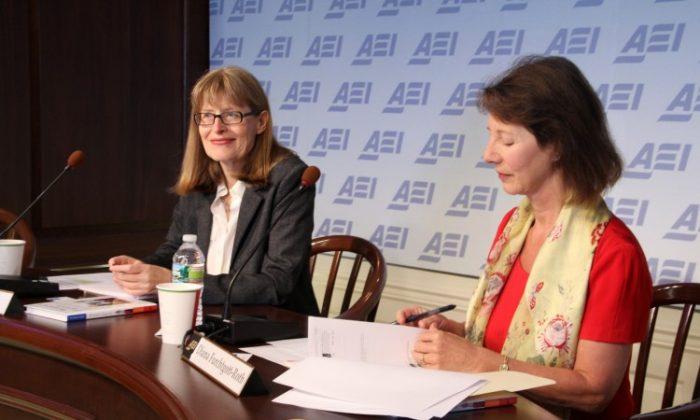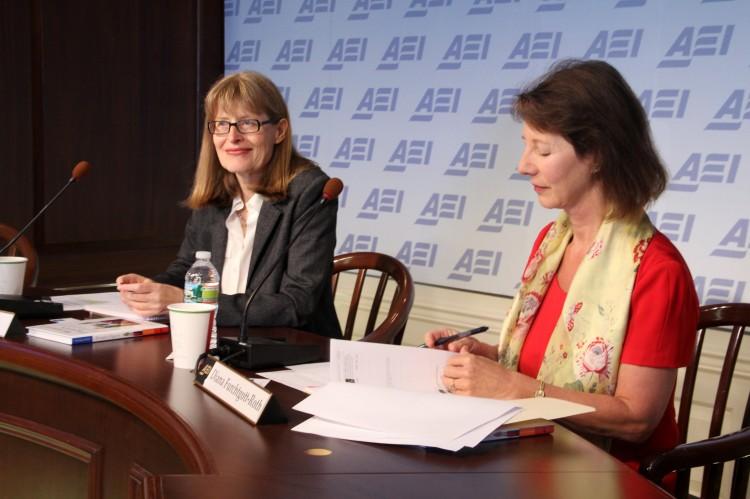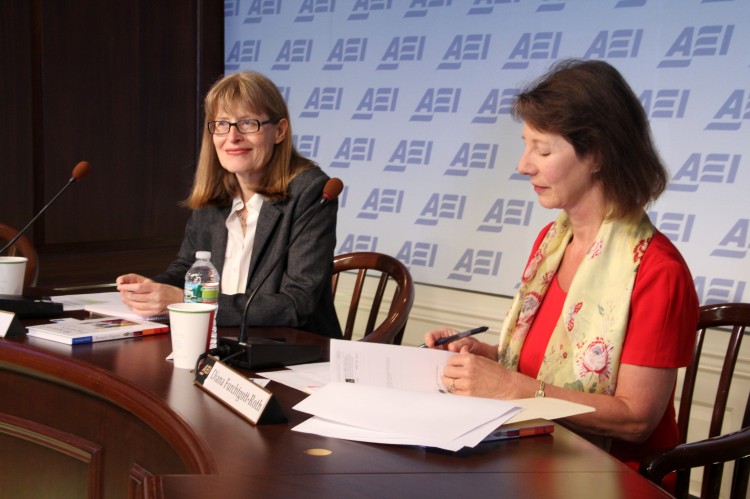WASHINGTON—What each presidential candidate may offer women, and particularly working women, was the subject of an American Enterprise Institute (AEI) forum titled, Obama vs. Romney: What’s at stake for America’s working women? in Washington, D.C., Sept. 27.
More women than men will vote in the coming general elections, but both men and women are reacting differently to the candidates.
“Almost all polls show women prefer Obama by large margins and men prefer Governor Romney by narrow margins,” said Karlyn Bowman, political analyst with the Washington-based think tank the AEI.
Representing the conservative view was Diana Furchtgott-Roth, author and former chief of staff to President George W. Bush’s Council of Economic Advisers, who argued that there is no wage gap, that there is no glass ceiling, and that for government to regulate on perceived gender imbalances would only burden businesses already struggling with the economic downturn.
Furchtgott-Roth, a senior fellow at the Manhattan Institute, has just published a second edition of her book, titled, “Women’s Figures: An Illustrated Guide to the Economic Progress of Women in America,” in which she endeavors to debunk the glass ceiling and wage gap arguments.
She told the forum that it is true that women earn around 77 cents on a man’s dollar, but she argued that the figure is based on a simple average. It does not account for different choices women make in selecting careers, and neither does it account for the hours they work.
“It doesn’t mean that they are discriminated against, nor is it a social problem,” said Furchtgott-Roth at the forum.
Ariane Hegewisch, study director at the Institute for Women’s Policy Research (IWPR), complimented Furchtgott-Roth on her book, saying it was a “great collection of facts, ” but she disagreed with the interpretation of the data.
Like Furchtgott-Roth, Hegewisch believes that working women have made “great advances” over the last few decades, but at the forum she noted, “There are still a lot of gaps.”
Hegewisch outlined specific examples of wage inequality, explaining first how difficult it is to determine. In many workplaces, workers “are contractually barred from discussing their wages or are strongly discouraged.”
Because of the secrecy, the extent of discrimination is difficult to ascertain, and evidence is often found in lawsuits against companies for wage discrimination based on gender.
Hegewisch cited a recent case in the California Supreme Court involving Wal-Mart Stores Inc. Women were paid less in the cosmetics department than men were in the camera department of the store, and women were also excluded from working in the camera department, she said.







Friends Read Free